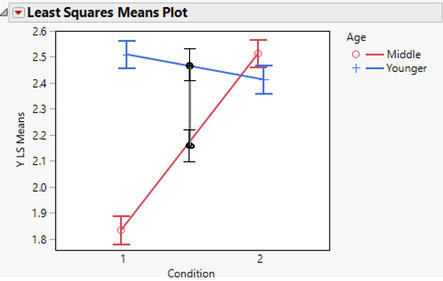- JMP will suspend normal business operations for our Winter Holiday beginning on Wednesday, Dec. 24, 2025, at 5:00 p.m. ET (2:00 p.m. ET for JMP Accounts Receivable).
Regular business hours will resume at 9:00 a.m. EST on Friday, Jan. 2, 2026. - We’re retiring the File Exchange at the end of this year. The JMP Marketplace is now your destination for add-ins and extensions.
- Subscribe to RSS Feed
- Mark Topic as New
- Mark Topic as Read
- Float this Topic for Current User
- Bookmark
- Subscribe
- Mute
- Printer Friendly Page
Discussions
Solve problems, and share tips and tricks with other JMP users.- JMP User Community
- :
- Discussions
- :
- Difference in differences _DID or DD
- Mark as New
- Bookmark
- Subscribe
- Mute
- Subscribe to RSS Feed
- Get Direct Link
- Report Inappropriate Content
Difference in differences _DID or DD
Hello,
How can I perform the difference in difference calculation in JMP?
Thanks,
Ne
- Mark as New
- Bookmark
- Subscribe
- Mute
- Subscribe to RSS Feed
- Get Direct Link
- Report Inappropriate Content
Re: Difference in differences _DID or DD
Hello @NeF
For a categorical response, this should be addressed very well by my colleague @Mark_Bailey in this post: How to determine differences between each pair of categorical data with 3+ groups
For a continuous response, the difference of the differences (DID or DD) is just a test of the interaction between two categorial variables (where each variable consists of just two levels).
To do this, you will use the Fit Model platform in JMP. Consider the following simple example, looking at the relationship between Age and Condition on Y:
I have Age (Middle vs Younger) and Condition within Age (1 vs 2).
Suppose I am interested in testing the whether the difference between Age = Middle at Condition 1 vs 2 is different from the difference between Age = Younger at Condition 1 vs 2. Said differently, suppose I want to construct a hypothesis test on the Difference between Age Middle (2 - 1) and Age Younger (2 - 1) in relation to the Y response?
Again, this is just a test of the interaction between Age and Condition on Y. In JMP, this interaction is captured by a term that is denoted as "Age*Condition."
To do this, I will go into Fit Model and Construct a Model adding the Age effect, Condition effect, and the Age by Condition Interaction effect. You can see how to do this in this video if you're unfamiliar.

Our results in this case indicate that the the DID is statistically significant at the 0.05 alpha level. Said practically, the degree to which Condition (2 versus 1) depends on the level of Age (Younger vs Middle) is statistically significant. Graphically this is perhaps more intuitive and can be visualized in the Fit Model output (in the Effect Leverage report):
If we schematically represent the average effect of Age 'eliminating' Condition, we can see that this effect is statistically significant if we approximate the error bars on this effect (as being roughly similar to the error bars drawn at each Condition-by-Age Level):
Non-overlapping confidence intervals give us evidence of an effect in the population in much the same way that a statistically significant p-value (that is, a p-value < the level of alpha, typically 0.05) gives us such evidence. This is the "confidence interval version" of a 2-sample t-test (see Bluman, Elementary Statistics (7th edition), 2015).
Hope this helps! @PatrickGiuliano
Recommended Articles
- © 2025 JMP Statistical Discovery LLC. All Rights Reserved.
- Terms of Use
- Privacy Statement
- Contact Us





